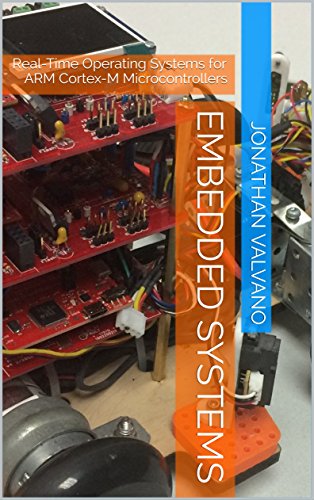White Paper
Embedded Microcomputer System Design: ARM and Operating Systems
Authors:
- IASR ADMIN
- ias-research.com
Abstract
Embedded microcomputer systems have become ubiquitous in modern devices, powering everything from smartphones and IoT devices to industrial automation systems. This white paper provides a comprehensive overview of embedded microcomputer system design, focusing on ARM architectures and operating systems. We explore key concepts, design methodologies, and challenges, accompanied by illustrative examples.
Introduction
Embedded microcomputer systems are characterized by their integration of hardware and software components, often with specific performance, power, and cost constraints. ARM architectures, with their energy-efficient designs and wide range of features, have become a dominant choice for embedded systems. This white paper will delve into the design considerations for ARM-based embedded microcomputer systems, including the selection of appropriate hardware and software components.
ARM Architecture
- Core Architectures: Explore the different ARM core architectures, such as Cortex-M, Cortex-A, and Neoverse, and their suitability for various embedded applications.
- Instruction Set Architecture (ISA): Discuss the ARM ISA, including its register set, instruction types, and addressing modes.
- Memory Management Units (MMUs): Explain the role of MMUs in managing memory access and protecting system resources.
Operating Systems
- Real-Time Operating Systems (RTOS): Discuss the characteristics and requirements of RTOSes for embedded systems, such as deterministic scheduling and low latency.
- General-Purpose Operating Systems (GPOS): Explore the use of GPOSes (e.g., Linux, FreeRTOS) in embedded systems, considering their advantages and limitations.
- Kernel Customization: Discuss techniques for customizing RTOS kernels to meet specific application requirements.
Design Considerations
- Power Management: Explore strategies for optimizing power consumption in embedded systems, including low-power modes and dynamic voltage scaling.
- Memory Management: Discuss memory allocation and management techniques for embedded systems, considering factors such as fragmentation and cache coherence.
- Interrupts and Exceptions: Explain the role of interrupts and exceptions in handling asynchronous events and maintaining system responsiveness.
- Security: Address security concerns in embedded systems, including protection against vulnerabilities and attacks.
Case Studies
- IoT Devices: Illustrate the design of IoT devices using ARM-based microcontrollers and suitable operating systems.
- Industrial Automation: Discuss the requirements and challenges of designing embedded systems for industrial automation applications.
- Mobile Devices: Explore the design considerations for smartphones and tablets, including performance, power efficiency, and user experience.
Conclusion
Embedded microcomputer systems play a vital role in modern technology. By understanding ARM architectures, operating systems, and design considerations, engineers can effectively design and implement these systems to meet specific application requirements. This white paper has provided a comprehensive overview of embedded microcomputer system design, equipping readers with the knowledge to tackle complex projects in this field.
References
- Embedded Systems: Architecture, Programming, and Design by Raj Kamal, M. Mazumder, and L. M. Patnaik. Tata McGraw-Hill Education Private Limited, 2010.
- Real-Time Systems: Design and Analysis by Jane W. Slonaker. Wiley, 2009.
- ARM System-on-Chip Architecture by Steve Furber. Addison-Wesley Professional, 2000.
- Linux for Embedded Systems by Gerald J. Pfeifer. Addison-Wesley Professional, 2003.
- FreeRTOS Kernel Reference Manual from Real-Time Engineers Ltd.
- The Linux Programming Interface: A Linux System Programming Guide by Michael Kerrisk. No Starch Press, 2010.
Note: The specific references you may need to cite will depend on the content and focus of your work. Be sure to carefully review the guidelines of your assignment or publication to ensure that you include all necessary references.contact ias-research.com for details.



